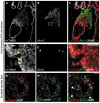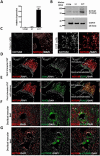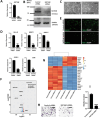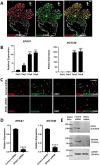This is a preprint.
NOTUM-MEDIATED WNT SILENCING DRIVES EXTRAVILLOUS TROPHOBLAST CELL LINEAGE DEVELOPMENT
- PMID: 38405745
- PMCID: PMC10888853
- DOI: 10.1101/2024.02.13.579974
NOTUM-MEDIATED WNT SILENCING DRIVES EXTRAVILLOUS TROPHOBLAST CELL LINEAGE DEVELOPMENT
Update in
-
NOTUM-mediated WNT silencing drives extravillous trophoblast cell lineage development.Proc Natl Acad Sci U S A. 2024 Oct;121(40):e2403003121. doi: 10.1073/pnas.2403003121. Epub 2024 Sep 26. Proc Natl Acad Sci U S A. 2024. PMID: 39325428 Free PMC article.
Abstract
Trophoblast stem (TS) cells have the unique capacity to differentiate into specialized cell types, including extravillous trophoblast (EVT) cells. EVT cells invade into and transform the uterus where they act to remodel the vasculature facilitating the redirection of maternal nutrients to the developing fetus. Disruptions in EVT cell development and function are at the core of pregnancy-related disease. WNT-activated signal transduction is a conserved regulator of morphogenesis of many organ systems, including the placenta. In human TS cells, activation of canonical WNT signaling is critical for maintenance of the TS cell stem state and its downregulation accompanies EVT cell differentiation. We show that aberrant WNT signaling undermines EVT cell differentiation. Notum, palmitoleoyl-protein carboxylesterase (NOTUM), a negative regulator of canonical WNT signaling, was prominently expressed in first trimester EVT cells developing in situ and upregulated in EVT cells derived from human TS cells. Furthermore, NOTUM was required for optimal human TS cell differentiation to EVT cells. Activation of NOTUM in EVT cells is driven, at least in part, by endothelial PAS domain 1 (also called hypoxia-inducible factor 2 alpha). Collectively, our findings indicate that canonical WNT signaling is essential for maintenance of human trophoblast cell stemness and regulation of human TS cell differentiation. Downregulation of canonical WNT signaling via the actions of NOTUM is required for optimal EVT cell differentiation.
Keywords: NOTUM; Placenta; WNT; extravillous trophoblast cells.
Conflict of interest statement
Competing interests No competing interests.
Figures





References
Publication types
Grants and funding
LinkOut - more resources
Full Text Sources
Molecular Biology Databases
Research Materials
